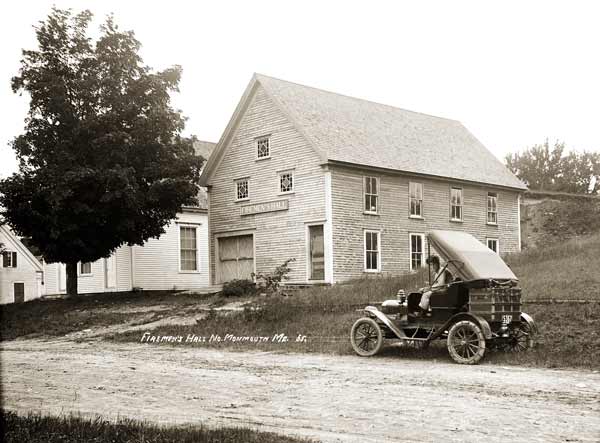B A C K T H E N
Maxwell in Monmouth
Herman Cassens’ game little Eastern Illustrating & Publishing Company Maxwell, shown here outside the Firemen’s Hall, was equipped with chains on the rear wheels for better traction on muddy roads. The identity of the female fellow traveler, who appears in a number of images from farflung corners of the State of Maine, is open to conjecture, but she evidently was a woman of fortitude and patience and a very good sport.
Monmouth, along with towns such as Winthrop, Turner, Bridgton, and Greene, was known for its apple orchards. In fact, it still is. In the late 1800s and early 1900s, Maine was a major exporter of winter apples to Great Britain via the ports of Portland and Boston.
After World War I, various problems beset Maine orchardists, including pests and competition from the West Coast and Nova Scotia. Severe winters in 1906–07 and 1917–18 were damaging, but the winter of 1933–34 was devastating. It caused the shift from the venerable Baldwin, long a New England standby, and the handsome but scarcely edible Ben Davis (a favorite apple for export, being second cousin to a cannonball) to the more winter-hardy red MacIntosh.
Text by William H. Bunting from Maine On Glass. Published by Tilbury House Publishers, 12 Starr St., Thomaston, Maine. 800-582-1899.
Maine On Glass and prints of the photographs are available through the Penobscot Marine Museum: PenobscotMarineMuseum.org.

